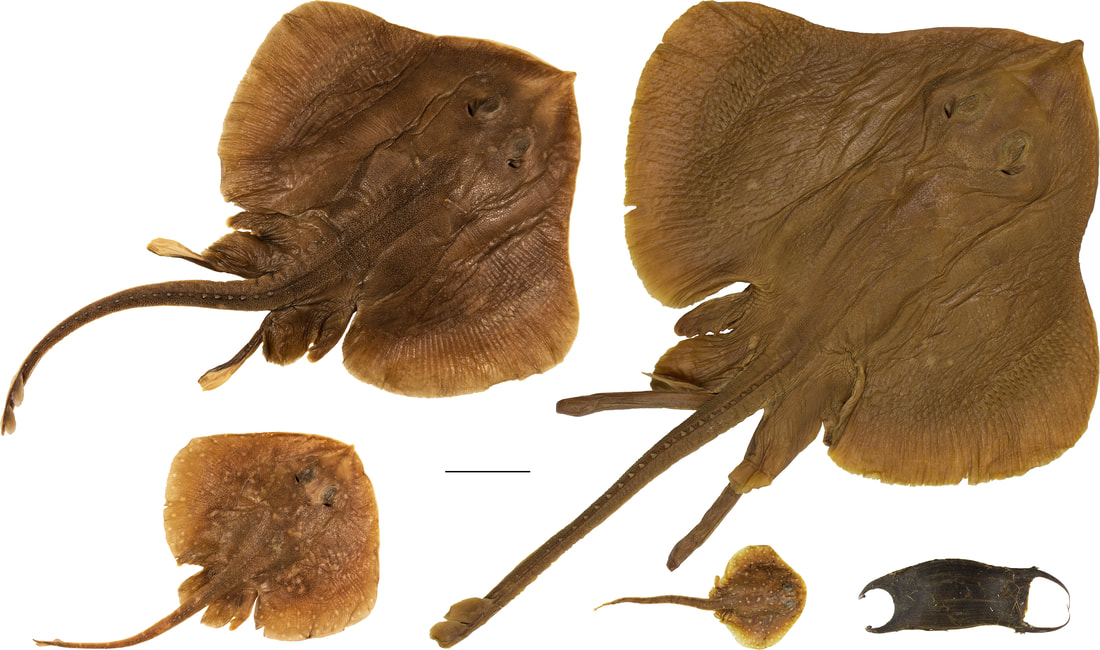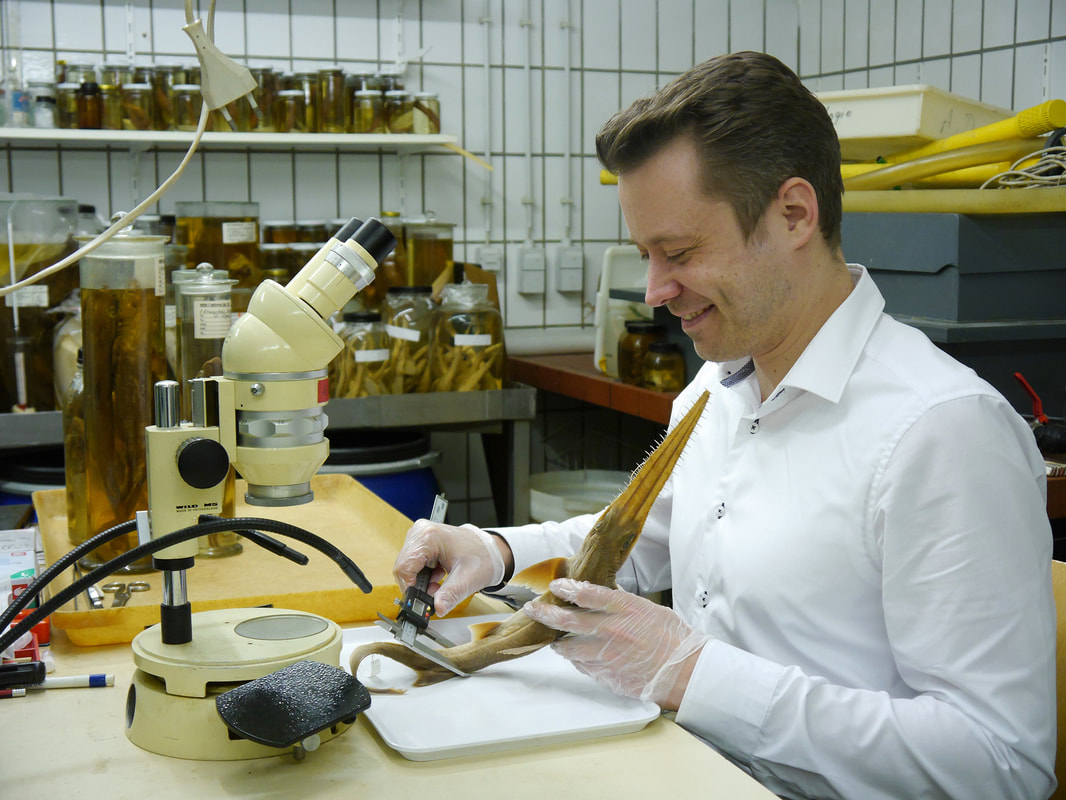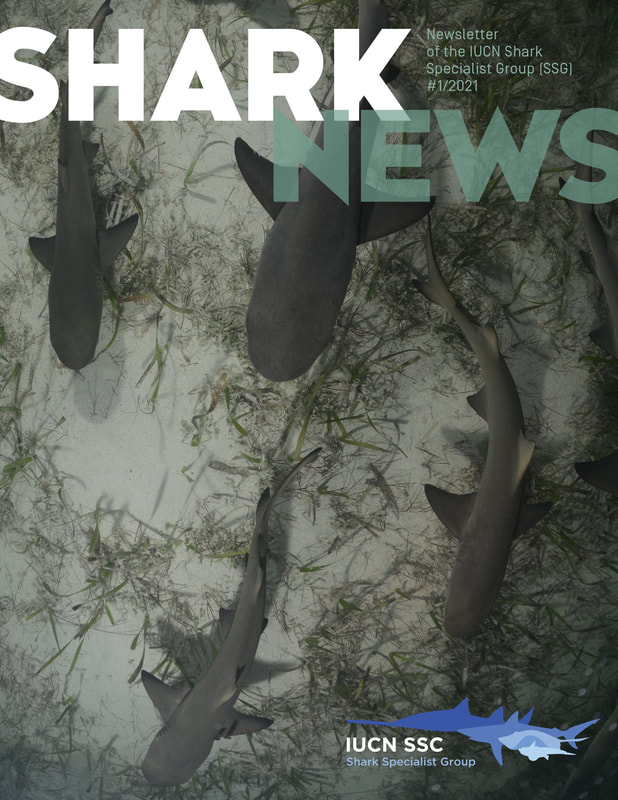|
Description of a new species of skate hitherto known only from egg cases described over 100 years ago Bathyraja arctowskii is an exceptional case in skate taxonomy as it was named by Dollo in 1904 based only on three empty egg capsules of tiny size from off the Antarctic Peninsula. The species as such remained undescribed for more than 100 years. The reason was the lack of specimens that could be assigned to Dollo's small egg capsules. Although Southern Ocean skates have generally been studied relatively well and are not as diverse as those in other areas, this species had been misidentified as a larger congener, B. griseocauda (Norman), or a new species for more than a century. In contrast, the species name Raja arctowskii was either neglected or considered a nomen nudum as it was not possible to link the empty egg capsules to any skate specimens. According to the International Commission on Zoological Nomenclature, a nomen nudum is a term used for a name that is not available due to the lack of a description, reference or indication. In the first edition of "Fishes of the Southern Ocean", Stehmann & Bürkel (1990: 88, 94) mentioned, keyed out and commented on a Bathyraja sp., which appeared to be the most abundant skate species in the Atlantic sector of Antarctic waters, primarily in the Weddell Sea. A specific account was not given by Stehmann & Bürkel (1990) due to its unresolved nomenclatorial problem. Later, Matthias Stehmann was able to find a gravid female of a small Bathyraja sp. that contained two small egg capsules and linked the egg capsules to those described as Raja arctowskii by Dollo back in 1904. Thus, Matthias Stehmann, Gavin Naylor and I teamed up to finally resolve this issue and comprehensively redescribe the species  Egg capsule and different maturity stages of Bathyraja arctowskii, clockwise from the eggcase on the right: egg capsule, 77.6 mm long, ZMH 9014; near-term male embryo, 120 mm total length (TL), ZMH 9014; juvenile female, 236 mm TL, ZMH 121822; subadult male, 424 mm TL, ZMH 121822; adult male, 533 mm TL, ZMH 120216. Scale bar: 5 cm. The Zoological Museum Hamburg (Germany) has an extensive collection of skates, including 276 complete specimens and 40 egg capsules of a small Bathyraja sp. When I examined this material, however, I could not find the gravid female that Matthias Stehmann had detected years ago and which we planned to use as evidence for the conspecificity of this small skate species with Dollo's Raja arctowskii. Therefore, other evidence was needed, which I finally found while examining the 40 small – about 8 cm long and 4 cm wide – egg capsules at ZMH: one of the egg capsules, which were conspecific with the syntype egg capsules of Dollo's R. arctowskii, contained a near-term embryo. And when we compared the embryo in detail with other specimens of different maturity stages and sexes, we could prove their conspecificifity (Figure 1). This enabled us to describe R. arctowskii, including external and skeletal morphology, morphometrics and meristics, clasper morphology and skeleton, scapulocoracoid (shoulder girdle) pelvic girdle, as well as genetics. Based on the claspers' characteristics, assigning the species to the genus Bathyraja Ishiyama unambiguously was possible. Growing to just 61 cm long, it represents the smallest known species of this species-rich deep-water skate genus. Some specimens of B. arctowskii are quite heavily spotted, making the species more strongly patterned than many of its plain dark congeners. Considering their occurrence in deep waters, pronounced color patterns are rarely needed. Detailed examinations of the syntype egg capsules in the IRSNB collection in Brussels (Belgium) were planned but prevented by the SARS-CoV-2 / COVID-19 pandemic. Nevertheless, Thomas Reinecke and I still intend to get back to this topic, combined with more detailed examinations of the microscopic morphology of teeth, denticles, and thorns in the future. Several further issues still exist in this genus, including a possibly undescribed species in Antarctic waters, which we briefly characterized in our paper on Bathyraja arctowskii, as well as a general issue with the validity of the two genera Bathyraja (currently containing 53 valid species) and Rhinoraja Ishiyama (now comprising four valid species). As both genera's differentiation solely relies on the presence or absence of segmented rostral cartilage, the separation into two genera has been questioned. The hypothesis of congenerity is supported by unpublished mitochondrial molecular data, which indicate that at least two of the four species of Rhinoraja, R. longicauda Ishiyama and R. taranetzi Dolganov, are deeply nested within Bathyraja. An ongoing collaborative project with several further colleagues on the differentiation of these genera and the validity of several poorly-known species aims to collect molecular and morphological data for all four species of Rhinoraja and compare them in detail to a large set of data taken from various valid species of Bathyraja. The project will also investigate several other issues related to many species of Bathyraja, particularly several possible synonymies and the elevation of subgenus Arctoraja Ishiyama to full generic rank. Main reference: Stehmann*, M.F.W., Weigmann*, S. & Naylor, G.J.P. (* equal contribution authors) First complete description of the dark-mouth skate Raja arctowskii Dollo, 1904 from Antarctic waters, assigned to the genus Bathyraja (Elasmobranchii, Rajiformes, Arhynchobatidae). Marine Biodiversity. 51, 18 (2021). doi.org/10.1007/s12526-020-01124-1
Comments are closed.
|
Archives
May 2024
Categories
All
|


